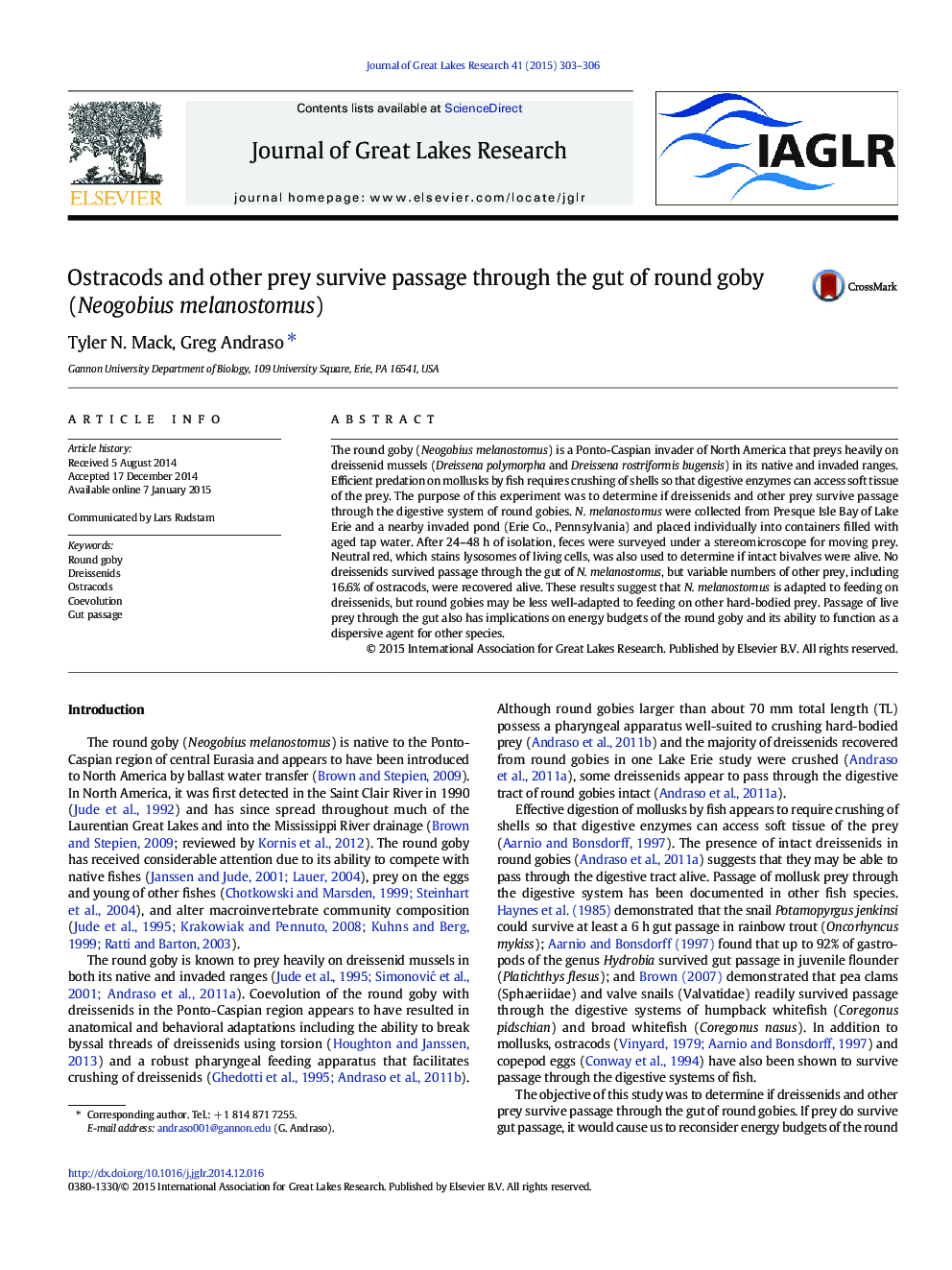| Article ID | Journal | Published Year | Pages | File Type |
|---|---|---|---|---|
| 6305196 | Journal of Great Lakes Research | 2015 | 4 Pages |
Abstract
The round goby (Neogobius melanostomus) is a Ponto-Caspian invader of North America that preys heavily on dreissenid mussels (Dreissena polymorpha and Dreissena rostriformis bugensis) in its native and invaded ranges. Efficient predation on mollusks by fish requires crushing of shells so that digestive enzymes can access soft tissue of the prey. The purpose of this experiment was to determine if dreissenids and other prey survive passage through the digestive system of round gobies. N. melanostomus were collected from Presque Isle Bay of Lake Erie and a nearby invaded pond (Erie Co., Pennsylvania) and placed individually into containers filled with aged tap water. After 24-48Â h of isolation, feces were surveyed under a stereomicroscope for moving prey. Neutral red, which stains lysosomes of living cells, was also used to determine if intact bivalves were alive. No dreissenids survived passage through the gut of N. melanostomus, but variable numbers of other prey, including 16.6% of ostracods, were recovered alive. These results suggest that N. melanostomus is adapted to feeding on dreissenids, but round gobies may be less well-adapted to feeding on other hard-bodied prey. Passage of live prey through the gut also has implications on energy budgets of the round goby and its ability to function as a dispersive agent for other species.
Related Topics
Physical Sciences and Engineering
Earth and Planetary Sciences
Earth and Planetary Sciences (General)
Authors
Tyler N. Mack, Greg Andraso,
